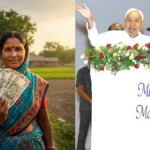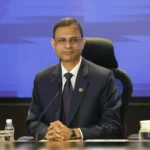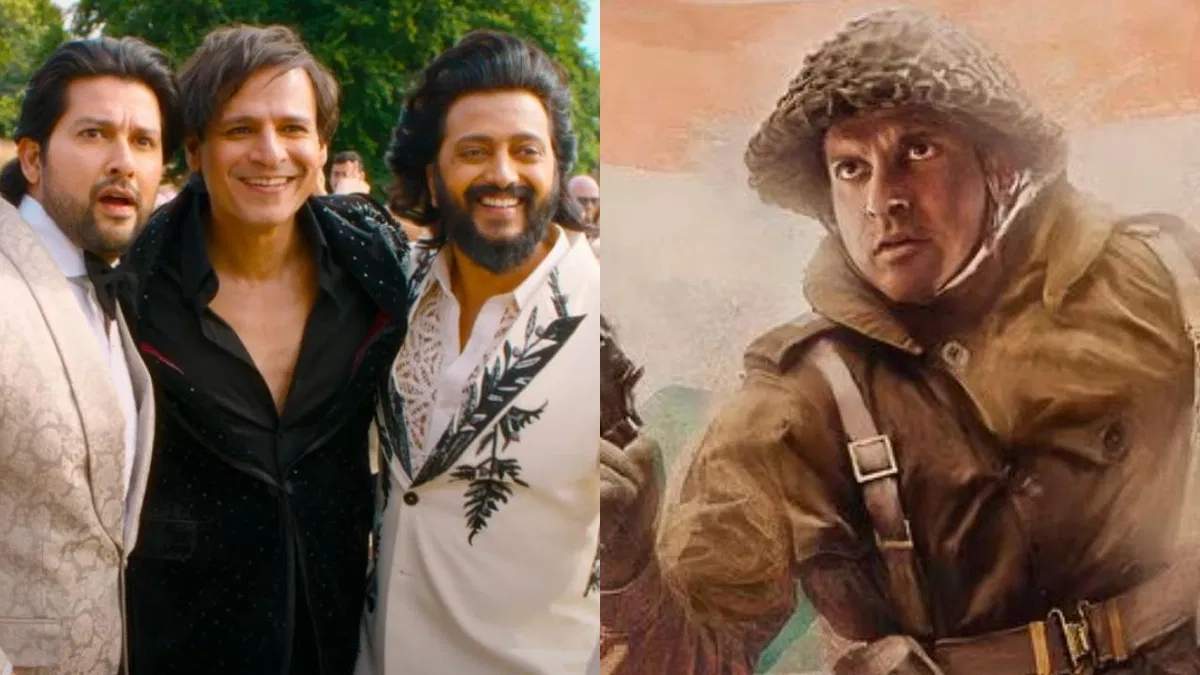Six years after De De Pyaar De stirred conversations around age-gap relationships in mainstream Hindi cinema, the franchise returns with its sequel—De De Pyaar De 2. While Ajay Devgn reprises his role as the middle-aged lover navigating complicated family dynamics, it is R. Madhavan who walks away with the film, delivering an emotionally rich, humorous and heartfelt performance that firmly places him at the center of this installment.
Directed by Anshul Sharma and written by Luv Ranjan, the second part attempts to build on the provocative premise of the 2019 film while expanding the world with new characters, new conflicts, and a more inclusive approach to relationships. But does it succeed? Let’s dive in.
A Quick Recap: What Made the First Film Work
The original De De Pyaar De surprised audiences by presenting a bold, refreshing subject—an older, divorced man, Ashish Mehra (Ajay Devgn), falls in love with a vibrant 26-year-old engineer, Ayesha (Rakul Preet Singh). What truly made the film stand out was how unapologetically it embraced this May-December romance, without making the age gap the punchline.
Hindi cinema has showcased older-man-younger-woman romances before, but not with such mainstream accessibility. Ajay Devgn’s salt-and-pepper look and Rakul’s lively performance created a dynamic that felt both glamorous and believable. Add to that Tabu’s brilliant portrayal of Ashish’s ex-wife, and the film became a balanced mix of awkward humour, emotional maturity, and family chaos.
Part 2 Begins Exactly Where It Left Off
The sequel wastes no time in picking up the threads of the story. This time, the narrative spotlight shifts from Ashish’s side of the family to Ayesha’s parents, who finally enter the scene. The “modern and liberal” Rajji Khurana (played with surprising tenderness and flair by R. Madhavan) and his wife Mrs. K (Gautami Kapoor) fly straight into the storm once they discover their daughter is romantically involved with a man close to their own age.
And that is where the fun begins.
The film explores the inevitable Indian parental meltdown—shock, denial, dramatic reactions, and emotional negotiations—all stretched over a two-and-half-hour rollercoaster of comedy and drama. The premise is simple yet deeply cultural: how do urbane, progressive parents respond when confronted with a would-be son-in-law who could be their contemporary?
Madhavan Steals the Spotlight Once Again
Just like their previous outing together in Shaitaan, Madhavan and Devgn share magnetic screen presence. But if the first film was Devgn’s show, the sequel belongs undeniably to R. Madhavan.
Madhavan plays Rajji Khurana—a father whose instinct to protect his daughter is strong but who must learn to embrace her choices, even if they clash with his belief system. His character arc is beautifully written: from the initial disbelief to simmering suspicion, emotional turbulence, and finally acceptance. Madhavan adds warmth, sensitivity, and humour to the role, transforming what could have been a stereotypical overprotective father into someone layered and incredibly relatable.
His portrayal subtly mirrors the journey of many Indian dads—torn between their progressive ideals and deep-rooted protective instincts. Watching him realise that letting your child make her own choices (and even her own mistakes) is the ultimate expression of love, becomes one of the most powerful parts of the narrative.
In contrast, Ajay Devgn’s character, Ashish, appears purposely subdued—a calm center around whom the chaos unfolds. Rakul Preet Singh remains spirited and energetic, and Jaaved Jafferi returns as Ashish’s therapist-friend, adding witty relief. Yet Madhavan’s emotional depth overshadows almost everyone.
Luv Ranjan’s Evolution as a Writer
One of the most noticeable shifts in De De Pyaar De 2 is in the writing. Luv Ranjan, known for his early films like Pyaar Ka Punchnama, has often been criticized for centering immature male characters and problematic gender dynamics. But in this film, Ranjan seems to have taken a meaningful step forward.
His male characters are no longer stuck in the boy-club trope. Instead:
- Men encourage women to chase their happiness
- The birth of a girl child is enthusiastically celebrated
- Potential boyfriends help the girl find her “true love”
- Women emerge as the wiser, emotionally grounded voices
This shift not only modernizes the storytelling but also makes the characters more grounded in contemporary urban India. The film celebrates liberal values without mocking tradition, striking a far more mature tone than Ranjan’s earlier work.
A Sitcom-Like Setup That Sometimes Overstays Its Welcome
While the film succeeds in emotional arcs and character development, its biggest drawback is its pacing. Much of the story plays out in a large house—clearly a glossy set—which gives the film a sitcom vibe. This makes the film light and breezy in parts, but the lack of visual variety and prolonged scenes can make the narrative drag.
At 150+ minutes, the length feels excessive. The comedy, though charming, stretches too long before reaching the emotional beats that truly matter.
The film raises a subtle but important question through its leisurely pace:
Is Indian society really ready to fully accept older-younger romantic pairings?
And even more daring:
What if the roles were reversed—a significantly older woman and a much younger man?
The script hints at this but stops short of exploring it, leaving viewers with a sense of unfinished contemplation.
The Performances: A Mixed Ensemble That Works
R. Madhavan – The Heart of the Film
His portrayal of a father torn between shock and compassion elevates the sequel. Whether he’s frustrated, emotional, or tender, Madhavan makes Rajji Khurana instantly believable and deeply lovable.
Ajay Devgn – Understated but effective
Devgn plays Ashish with calm maturity. He is less flamboyant here, but intentionally so—the film needs him to be the steady rock against Madhavan’s volatility.
Rakul Preet Singh – Charming as ever
Rakul maintains her lively screen persona and brings warmth to scenes that risk becoming repetitive.
Jaaved Jafferi – Comic timing intact
As Ashish’s therapist-friend, he adds laughter with clever lines and awkward conversations.
Supporting Cast Shines
- Suhasini Mulay as the grandmother is delightful with a sharp memory and sharper humour
- Ishita Dutta brings grace as the supportive sister-in-law
- Tarun Gahlot and Meezaan Jafferi add balance and warmth to the ensemble
Themes That Shine Through
1. Protection vs. Possessiveness
Through Madhavan’s character, the film examines how parental protection can subtly slip into control. The sequel beautifully unpacks how love must evolve into trust.
2. Age-gap relationships in modern India
While the first film broke ground, this sequel digs deeper into societal conditioning—how older relatives react, how young couples justify, and how families negotiate.
3. Female independence
Ayesha emerges as a young woman ready to make her own choices, no matter how unconventional. Her autonomy becomes the spine of the story.
4. The “modern Indian family”
The film mocks pretensions of urban liberalism—families that call themselves progressive until faced with real challenges that test their values.
Where the Film Falters
Despite strong performances and progressive writing, De De Pyaar De 2 isn’t without flaws:
- The film feels too long and occasionally repetitive
- The set-like environment reduces cinematic richness
- Ajay Devgn’s toned-down presence may disappoint fans expecting larger-than-life charisma
- Some emotional moments feel rushed despite the overall lengthy pacing
What You’ll Miss: Tabu
A big absence is Tabu, whose portrayal of Ashish’s ex-wife was a highlight of the first film. Her subtle humour, emotional intelligence, and chemistry with Devgn elevated many scenes. The sequel tries to fill that void with new characters, but her absence is unmistakable.
Verdict: A Mature, Engaging, Performance-Driven Sequel
De De Pyaar De 2 is not as novel as the original, nor as crisp. But it compensates with stronger emotional grounding, improved character arcs, and a standout performance by R. Madhavan.
If the first film introduced an unconventional romance, the sequel explores how families—especially Indian fathers—come to terms with choices made by their adult children. Madhavan’s journey from protective anxiety to heartfelt acceptance is the anchor that holds the entire narrative together.
The film resembles a long, sometimes stretched sitcom episode, but one filled with warmth, engaging moments, and genuinely progressive ideas.
Is it perfect? No.
Is it entertaining and emotionally rewarding? Absolutely.
Is Madhavan the real star? Without question.











